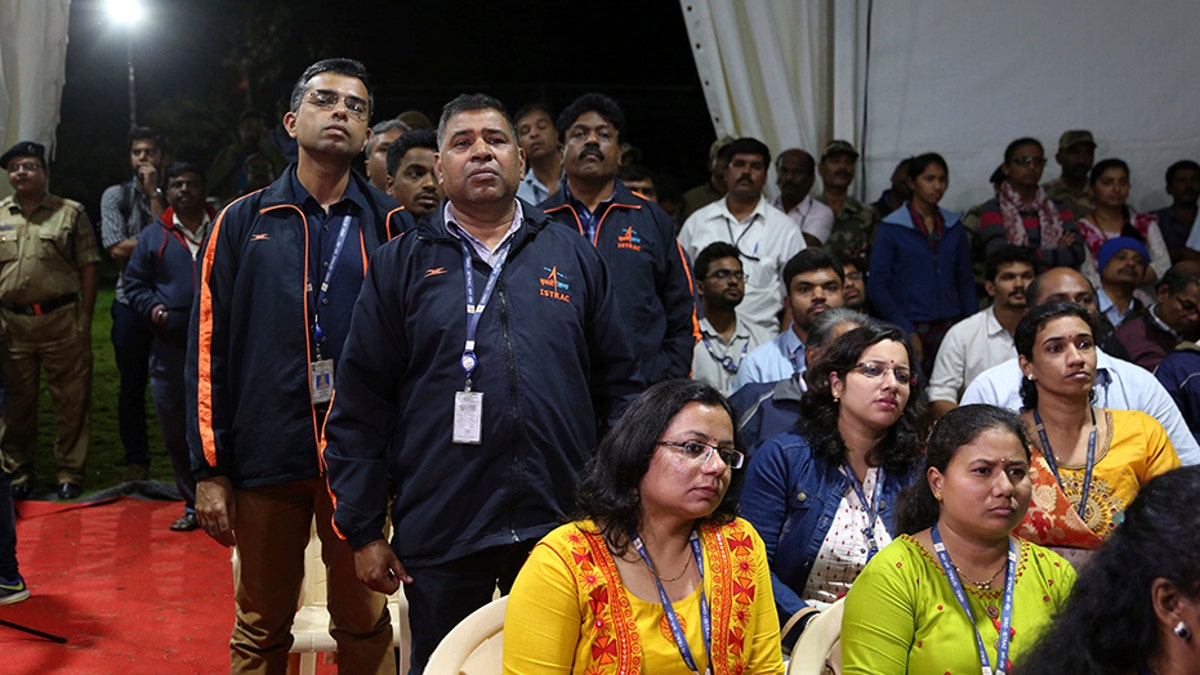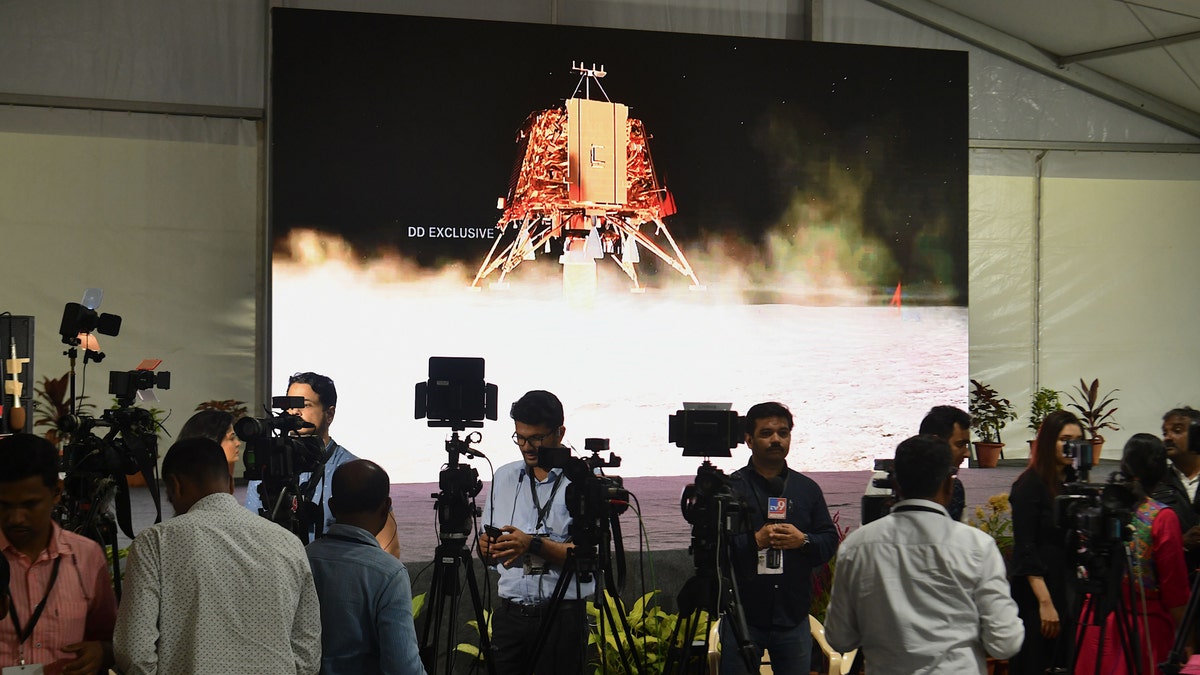Fox News Flash top headlines for Sept. 8
Fox News Flash top headlines for Sept. 8 are here. Check out what's clicking on FoxNews.com
India has located its missing Vikram lander on the lunar surface after losing contact with the probe when it was in the final stage of an audacious moon landing attempt Friday.
Communication with the unmanned lander was lost when it was just 1.3 miles from the lunar surface.
K Sivan, chairman of the Indian Space Research Organization, confirmed Sunday that the lander had been spotted. He told the Times of India that the space agency's Chandrayaan-2 orbiter has spotted Vikram on the lunar surface. ISRO is analyzing the data, he said.
INDIA LAUNCHES HISTORIC MISSION TO THE MOON
The roughly $140 million Chandrayaan-2 mission is intended to study permanently shadowed moon craters that are thought to contain water deposits that were confirmed by the Chandrayaan-1 mission in 2008.

Indian Space Research Organization (ISRO) employees react as they listen to an announcement by organizations's chief Kailasavadivoo Sivan at its Telemetry, Tracking and Command Network facility in Bangalore, India, Saturday, Sept. 7, 2019. India's space agency said it lost touch Saturday with its Vikram lunar lander as it aimed to land on the south pole of the moon and deploy a rover to search for signs of water. (AP Photo/Aijaz Rahi)
It is not yet clear what damage the lander suffered during its descent. The U.S., Russia and China are the only other countries to have successfully landed on the moon.
Earlier this year, Israel's uncrewed Beresheet spacecraft crashed during a moon landing attempt.
The Chandrayaan-2 spacecraft carrying the Vikram Lander launched from Sriharikota in southern India on July 22.
India's first lunar mission, Chandrayaan-1, orbited the moon in 2008 but did not land there. It did, however, launch an impact probe that was intentionally crashed into the Moon.
Chandrayaan-1 operated for 312 days.

Members of the media at the ISRO Telemetry Tracking and Command Network (ISTRAC) facility in Bangalore, on September 6, 2019. (MANJUNATH KIRAN/AFP/Getty Images)
The moon looms large for a number of countries’ space programs. China, for example, became the first country to successfully land a probe on the far side earlier this year when the Chang’e 4 lander reached the lunar surface on Jan. 2.
The U.S. also has its sights set on the celestial satellite and plans to land American astronauts, including the first woman, by 2024. The Artemis program will also establish a sustainable human presence.
APOLLO 11: HOW 'DUMB LUCK' SAVED ICONIC MOON PHOTOS FROM BEING DESTROYED
NASA recently revealed details of its vision for the Artemis Moon Lander.
Speaking at Kennedy Space Center on the 50th anniversary of the Apollo 11 moon landing on July 20, Vice President Pence announced that the Orion capsule that will take American astronauts back to the satellite is ready.
Since Apollo 11 astronauts Neil Armstrong and Buzz Aldrin set foot on the surface, only 10 more men, all Americans, have walked there.
CLICK HERE TO GET THE FOX NEWS APP
At a White House event in July, Apollo 11 astronaut Buzz Aldrin voiced his disappointment over America’s space progress since the days of Apollo 11.
Fox News’ Chris Ciaccia, Morgan Cheung and The Associated Press contributed to this article.
Follow James Rogers on Twitter @jamesjrogers
